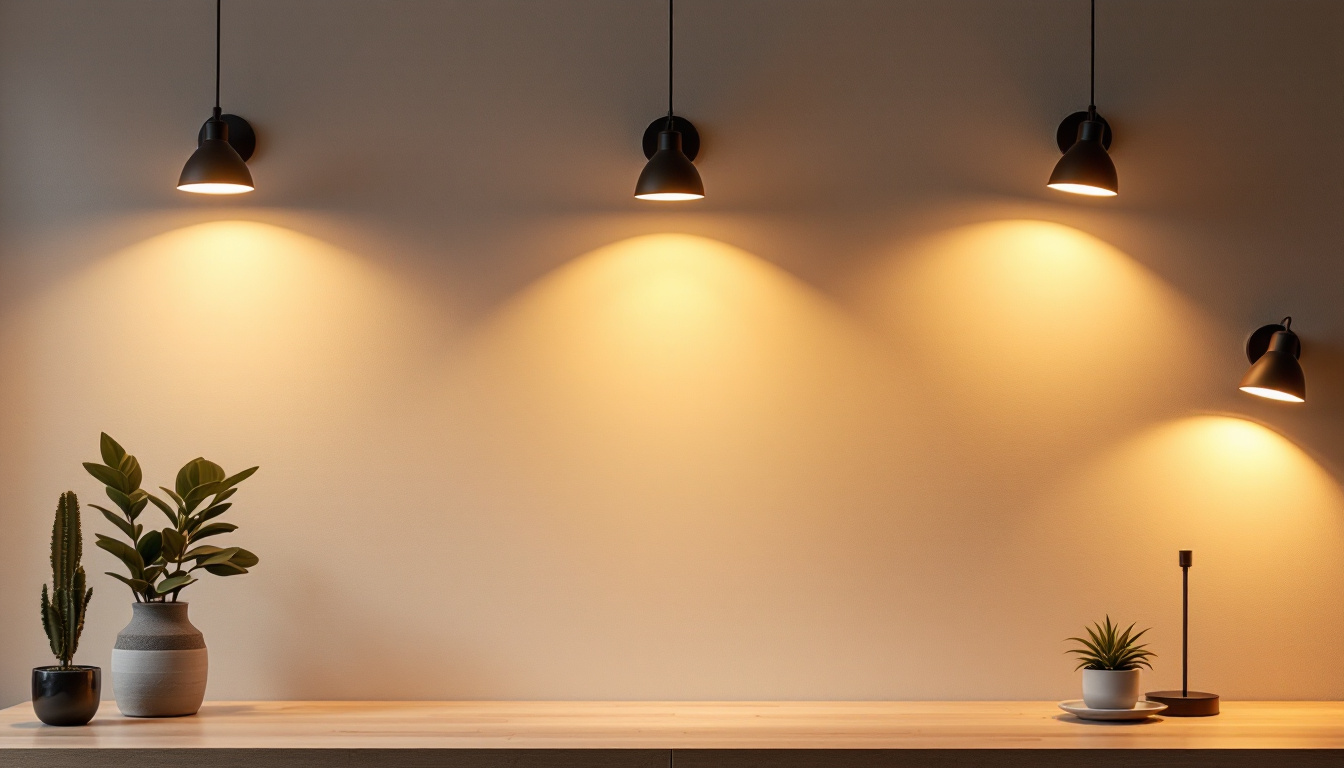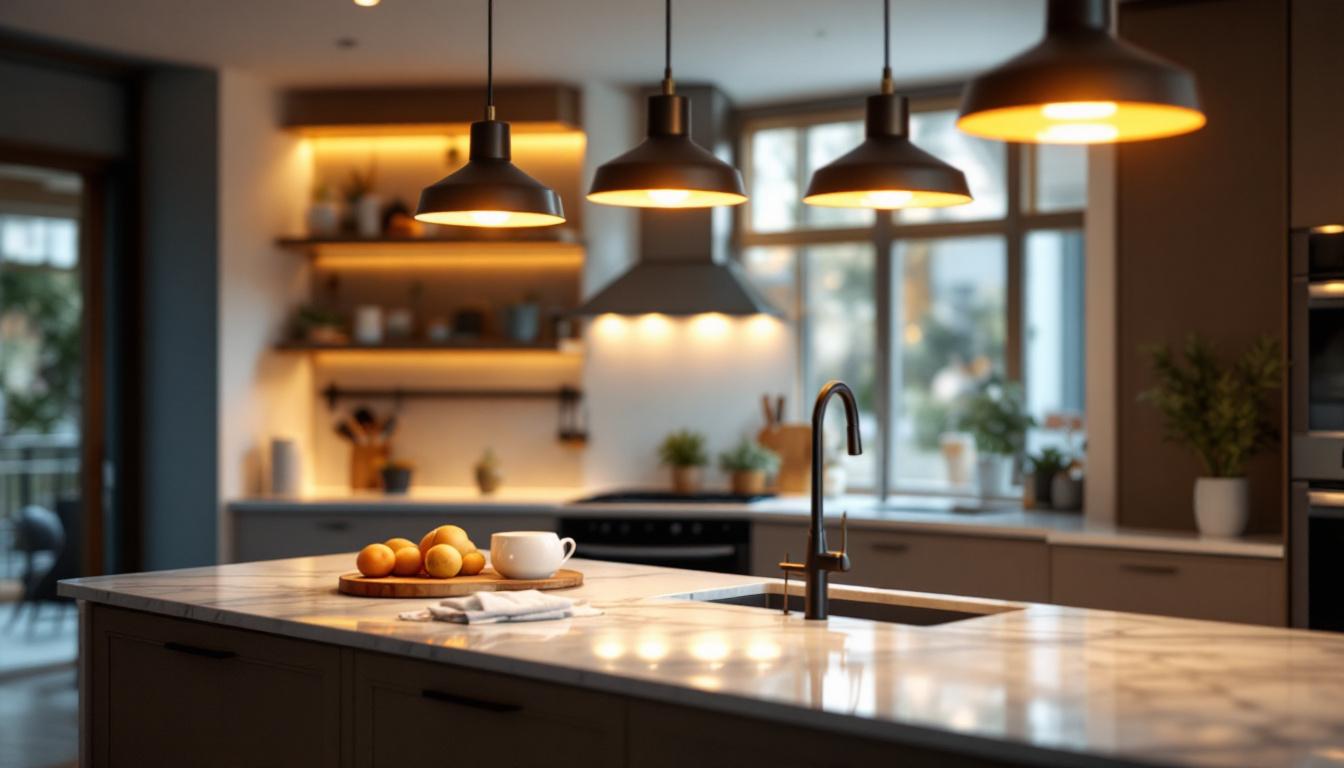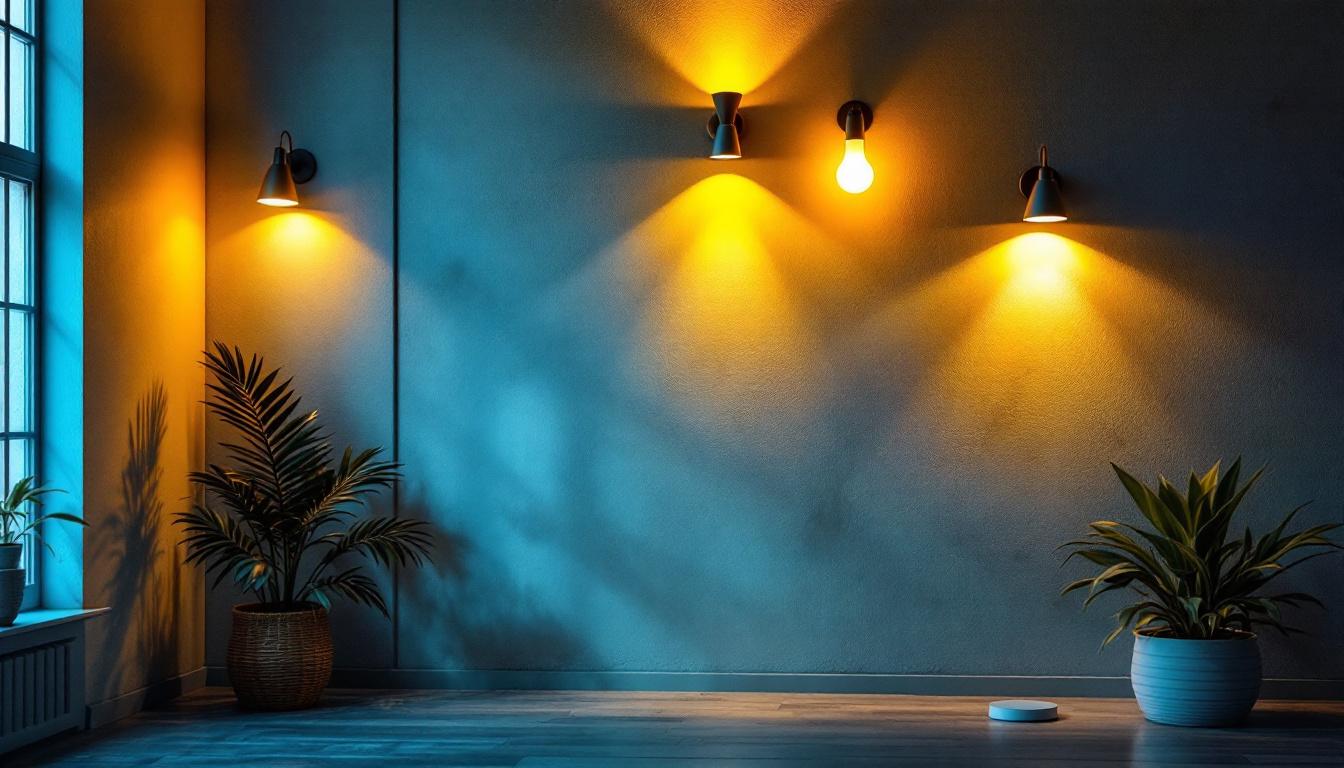
As the demand for versatile and efficient lighting solutions continues to grow, can lights have emerged as a popular choice for both residential and commercial projects. Lighting contractors play a crucial role in selecting the right fixtures to meet the needs of their clients. This article provides essential tips and insights into the best can lights available on the market, ensuring that contractors can make informed decisions that enhance their projects.
Can lights, also known as recessed lights or downlights, are fixtures that are installed into a ceiling or wall, providing a clean and unobtrusive lighting solution. Their design allows them to blend seamlessly with the architecture of a space, making them ideal for various applications, from accent lighting to general illumination. These fixtures can create a modern and sophisticated ambiance, enhancing the overall aesthetic of both residential and commercial environments.
These fixtures come in various sizes, shapes, and light sources, including LED, halogen, and incandescent options. Understanding the different types of can lights available is essential for contractors who want to deliver optimal lighting solutions tailored to their clients’ needs. The versatility of can lights also means they can be used in diverse settings, from cozy living rooms to expansive retail spaces, providing flexibility in design and functionality.
When selecting can lights, it is important to consider the different types available. Each type serves specific purposes and can significantly impact the overall aesthetic and functionality of a space. For instance, the placement and type of can lights can influence how a room feels—whether it appears more spacious or intimate—by directing light where it is most needed.
The choice of light source significantly affects the performance and energy efficiency of can lights. LED options are increasingly popular due to their longevity and low energy consumption. In contrast, halogen and incandescent bulbs may offer warmer tones but have shorter lifespans and higher energy costs. Furthermore, LEDs are available in a variety of color temperatures, allowing for customization that can enhance the mood of any room.
Contractors should evaluate the specific lighting needs of each project, considering factors such as color temperature, brightness, and energy efficiency. Understanding the benefits and drawbacks of each light source will enable contractors to make informed recommendations to their clients. Additionally, it is essential to consider dimmability options, as this feature can provide greater control over the ambiance and functionality of the lighting, allowing users to adjust the brightness according to their needs and preferences. By taking these factors into account, contractors can ensure that their clients achieve the perfect lighting solution for their spaces.
Proper installation is crucial for ensuring the effectiveness and longevity of can lights. Contractors must consider several factors to achieve optimal results, including placement, spacing, and ceiling height.
The placement of can lights can dramatically influence the ambiance of a room. A well-thought-out layout will enhance the overall design while providing adequate illumination. As a general rule, can lights should be spaced approximately 4 to 6 feet apart, depending on the ceiling height and the desired light output.
In areas with high ceilings, such as vaulted spaces, contractors may need to increase the spacing to ensure even lighting. Conversely, in smaller rooms, closer spacing may be necessary to achieve the desired effect. Additionally, it is essential to consider the purpose of the lighting—whether it is for general illumination, task lighting, or accent lighting—when determining placement. For instance, in a kitchen, can lights can be strategically placed above work areas like countertops and islands to provide focused light for food preparation, while in a living room, they can be arranged to create a warm, inviting atmosphere that encourages relaxation and social interaction.
The height of the ceiling plays a significant role in the effectiveness of can lights. For standard ceilings (8 to 9 feet), traditional can lights work well. However, for higher ceilings, contractors may need to opt for fixtures with higher lumen outputs or consider the use of dimmers to adjust brightness levels.
Furthermore, in spaces with sloped or vaulted ceilings, adjustable can lights can provide flexibility in directing light where it is needed most. This adaptability ensures that the lighting design remains functional and aesthetically pleasing. In addition, the color temperature of the bulbs used can greatly affect the perception of space; warmer tones can make a room feel cozy, while cooler tones can enhance a modern, open feel. It’s also worth noting that the use of smart lighting technology can further enhance the versatility of can lights, allowing homeowners to customize their lighting scenes based on time of day or specific activities, thereby maximizing both comfort and efficiency in their living spaces.
As sustainability becomes increasingly important in construction and design, lighting contractors must prioritize energy efficiency when selecting can lights. LED fixtures are often the best choice, offering significant energy savings and a longer lifespan compared to traditional bulbs.
When evaluating can lights, contractors should pay attention to energy ratings, such as the Energy Star certification. This designation indicates that the fixture meets strict energy efficiency guidelines set by the Environmental Protection Agency. Choosing Energy Star-rated products not only benefits the environment but can also lead to cost savings for clients in the long run.
Additionally, contractors should educate clients about the benefits of energy-efficient lighting solutions, including reduced energy bills and lower maintenance costs due to longer bulb life. This knowledge can help clients make informed decisions that align with their sustainability goals.
Incorporating smart technology into lighting design is another way to enhance energy efficiency. Smart can lights can be controlled remotely, allowing users to adjust brightness, color temperature, and even create lighting schedules. This level of control can lead to significant energy savings and improved user experience.
Contractors should stay informed about the latest smart lighting technologies and consider integrating them into their projects. By offering clients these innovative solutions, contractors can differentiate themselves in a competitive market while meeting the growing demand for smart home features.
Beyond functionality, the design of can lights plays a vital role in the overall aesthetic of a space. Contractors must consider how the fixtures will complement the interior design and architecture of each project.
Can lights come with various trim styles and finishes, allowing contractors to customize the look to suit the design vision. From sleek and modern to classic and ornate, the trim can significantly impact the overall appearance of the lighting.
Contractors should work closely with clients to understand their design preferences and recommend trim styles that align with the overall aesthetic. Additionally, considering the finish of the fixture—whether matte, polished, or textured—can further enhance the visual appeal of the lighting design.
The color temperature of can lights can influence the mood and atmosphere of a space. Warm white (2700K to 3000K) creates a cozy and inviting environment, making it ideal for residential settings. In contrast, cool white (3500K to 4100K) is often preferred for commercial spaces, providing a clean and professional appearance.
Contractors should educate clients about the impact of color temperature on the overall ambiance and help them select the appropriate options for each area of their project. By doing so, contractors can ensure that the lighting design enhances the intended mood and functionality of the space.
Adhering to local building codes and safety standards is paramount for lighting contractors. Can lights must meet specific requirements to ensure safe installation and operation.
Each region may have different regulations regarding electrical installations, including can lights. Contractors should familiarize themselves with local codes and ensure that all installations comply with safety standards. This knowledge not only protects clients but also enhances the contractor’s reputation for reliability and professionalism.
In addition to electrical codes, contractors should also consider fire safety regulations. Using IC-rated can lights, which are designed for contact with insulation, can help prevent fire hazards and ensure compliance with safety standards.
Following best practices during installation is critical for ensuring the safety and longevity of can lights. Proper wiring, secure mounting, and correct placement are essential components of a successful installation.
Contractors should also educate clients on the importance of regular maintenance and inspection of lighting fixtures. By providing guidance on how to care for can lights, contractors can help clients maximize the lifespan and performance of their lighting systems.
Can lights offer a versatile and stylish lighting solution for various applications, making them a popular choice among lighting contractors. By understanding the different types of can lights, installation considerations, energy efficiency, design elements, and compliance requirements, contractors can make informed decisions that enhance their projects.
As the lighting industry continues to evolve, staying informed about the latest trends and technologies will enable contractors to provide clients with innovative solutions that meet their needs. Ultimately, the right can lights can transform a space, creating inviting and functional environments that enhance the overall experience for occupants.
Ready to elevate your lighting projects with the best can lights on the market? Look no further than LumenWholesale, where we provide lighting contractors with exceptional, spec-grade lighting products at unbeatable wholesale prices. Our commitment to quality and affordability means you can access a wide range of reliable, high-performance lighting options to meet any project’s needs. Say goodbye to inflated markups and hello to hassle-free bulk buying with free shipping. Don’t compromise on quality or value—choose LumenWholesale for your lighting solutions. Discover the perfect blend of quality, affordability, and convenience today by visiting Wholesale Lighting at the Best Value.

Discover why lighting contractors should prioritize kitchen island illumination in their projects.

Discover why staying informed about the latest in 3500 lumens technology is crucial for lighting contractors.

Discover essential tips and expert advice on selecting and installing garage ceiling lamps tailored for lighting contractors.

Discover expert insights and best practices for installing indoor wall mounted lights from top lighting contractors.